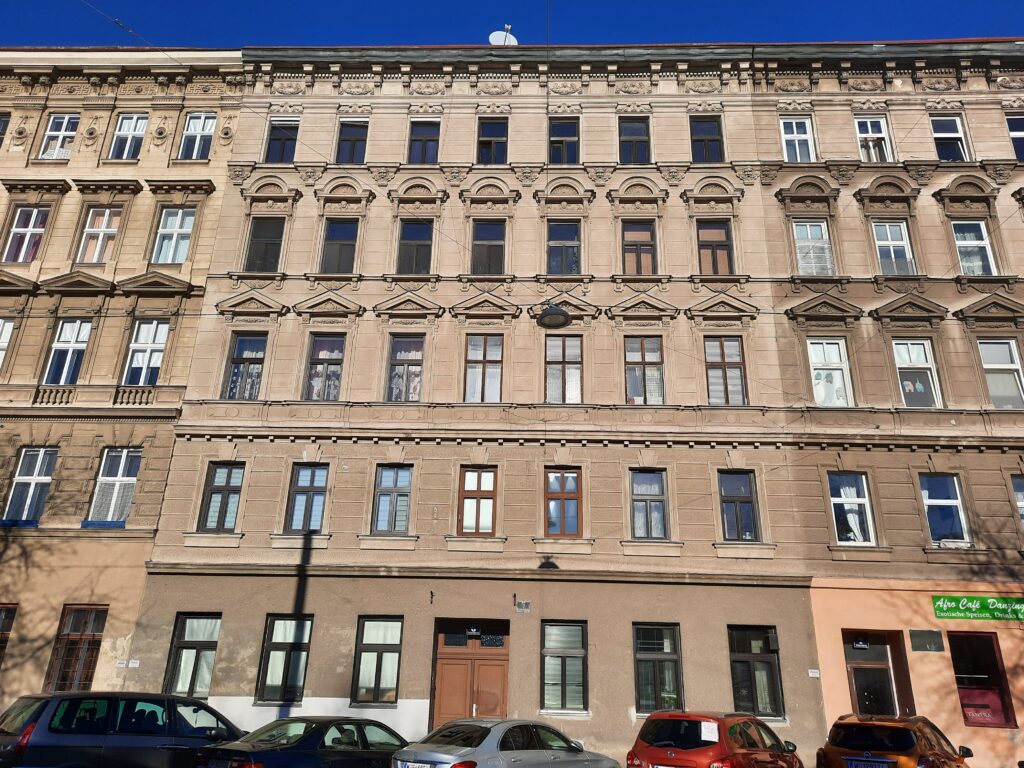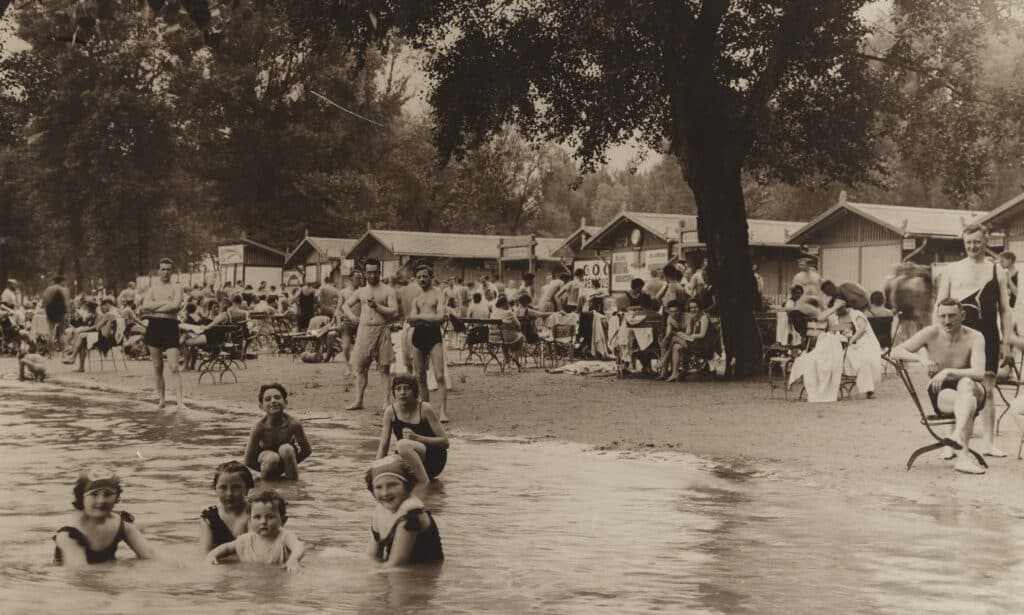Svenja Kalmar and Anna Hájková
Among the 31,000 Austrian Jews who escaped the Nazis to Great Britain was one Heinrich Schrefel. His story was not unlike that of many other Viennese Jewish emigrants: he was descended from Polish-Jewish parents, born in Vienna, and lived in the largely Jewish second district of Leopoldstadt. Schrefel escaped Vienna following his persecution by the Gestapo. In Great Britain, he was detained in the Kitchener Camp in Kent, together with thousands of other German and Austrian Jewish male refugees. Like many emigrés, he eventually changed his name to the more English sounding Henry Stevens. But one thing sets Schrefel apart: his life offers a queer counterpoint to the majority of Holocaust and Austrian Jewish histories. Schrefel’s run-in with the Gestapo in summer 1938 was because of his love for another man.

Schrefel’s story, reconstructed from his trial file, will, address books, and genealogical information, is bound to remain fragmentary. In the absence of a testimony of his own, much of what we offer here is guesswork. To queer historians, these are familiar challenges. We are particularly interested in exploring how this single case study can shine new light on Austrian Jewish and Holocaust history, and histories of Jewish emigration from Nazi Greater Germany to Britain.
Schrefel was born in 1910, the only child of Beile née Brauner and Hensel Schrefel. Both of his parents were born in what was then the Polish part of Austria-Hungary, which became independent Poland after 1918: Bieszczady county and Zolochiv, respectively. Heinrich attended eight years of school and then trained as a dental technician. Schrefel’s parents, who themselves ran a brandy store, bought him another in 1930, but he later sold the less successful store and helped his parents in their own business.
The Gestapo came across Schrefel following the arrest of another Jewish man for sodomy. In June 1938, the Gentile wife of the tailor Bernhard Weinberger caught her husband in bed with another man and reported him directly to the Gestapo. The following investigation of his contacts turned up Heinrich Schrefel. While it turned out that Schrefel did not have a relationship with Weinberger, he was found to have a relationship with another man: Franz Varmuža, a Gentile mechanic’s assistant eight years his junior and the child of Viennese Czechs. The police searched through Schrefel’s apartment, finding letters written only by men. One card from Varmuža stated: “Heinrich, really, I cannot stand it with Bobby,” indicating a jealous tension with another man, and hence romantic relationship, between the two.
In July 1938, the Gestapo arrested Schrefel and Varmuža and interrogated them as well as a dozen witnesses. The people in the case demonstrate the old multinational Vienna: Jews and Gentiles, ethnic Austrians and Viennese Czechs. Echoing Marsha Rozenblit, most of the Jewish protagonists were either born in what became Poland after 1918, or their parents were. Two months after their arrest, Schrefel and Varmuža were put on trial. The surviving trial records offer a number of perspectives: on the world of Austrian men who had sex with men, on the social isolation of Austrian Jews post Anschluss (German annexation of Austria in March 1938 followed by massive outbreak of antisemitic violence), and on the persecution of queer sexuality in Nazi Austria.
First, the protagonists operated based on the stated perception of a homosexual identity. Unlike in Britain, where Laura Doan and others have argued that a clear notion of non-heterosexual identity came about only after WWII, all of the protagonists, the persecuted couples, the witnesses, both Jewish and Gentile, and the investigating authorities knew that there were men attracted only to other men and identified as such. The expression Schrefel himself used to describe this was “warm,” fitting exactly what the eminent experts of the topic Manuela Bauer, Andreas Brunner, Hannes Sulzenbacher, and Christopher Treiblmayr described as “milieu specific language use.”

During his first Gestapo interview, Schrefel brought up two women claiming that he had had relations with them as a defence against the accusations. Both women named were Jewish, since sex with non-Jewish women would have brought on charges of “racial defilement.” The women were subsequently interviewed by the Gestapo: Daisy remembered that Schrefel told her that “he had no interest in ladies,” and she called him “dispositioned as a pervert [widernatürlich veranlagt].” Grete heard from mutual friends that Schrefel was ”homosexual,” and added that she found him “extremely likeable.” Another witness, Friedrich, a Gentile, told the Gestapo that Schrefel propositioned him, and even though he claimed to have found the idea repulsive, he still gave Schrefel a friendship album with handwritten entries that he had asked him for. These testimonies give the impression that all of Schrefel’s acquaintances, at least those around the Volkertmarkt, knew that he loved men and in fact self-identified as such.
The statements offer a picture of queer male sociability in Vienna in the 1930s. Schrefel lived in a world surrounded by men, especially younger men. In his interrogation, he commented that his friend Weinberger gushed about “tanned, muscular, male bodies” when they went swimming in the Old Danube. These friendships and acquaintances often started and played out in cafes and pubs – in particular Café Lenger.

In their interrogations, Schrefel and Varmuža also described the sex they had together. As historians of Nazi persecution of gay men have shown, the Gestapo forced their victims to describe their intimate lives in detail. At the same time, the officers developed a particular language that othered sexual practices that the Nazis considered deviant. In this light it is difficult, perhaps even impossible, for historians working with these records to depart from this language that intends to repulse. Thus, we only want to share that the witnesses recalled the couple as intimate, kissing, and affectionate with each other; even under duress, Varmuža talked about Schrefel as someone whom he loved (even though he specified that only as a good friend).
The Anschluss and subsequent anti-Jewish violence was a total watershed. Daisy’s Gentile boyfriend broke up with her. Schrefel could no longer frequent his beloved cafes and bars, as another Jewish witness, Isaak, noted in a passing remark. Now, Schrefel hung out at Isaak’s parents’ home. Remarkably at this point, in spring and summer 1938, Viennese Jews were not yet legally banned from restaurants – but these were for them no longer safe places.
In the context of Nazi persecution of gay men in Vienna, Schrefel’s persecution was in many respects typical. Same-sex desire was persecuted in Austria according to the §129 of the criminal code, which outlawed the behaviours of both men and women. Thanks to the research project “‘Warme’ vor Gericht” by QWIEN, who analyzed all accessible trials for §129 between 1938 and 1945, we know both the qualitative and quantitative trends of the trials against queer men and women. That both Schrefel and Varmuža were lower middle-class and working-class, respectively, is not surprising because persecution disproportionately targeted poorer people. In addition, Schrefel’s defense strategy is in keeping with that of many other queer men on trial for “unnatural fornication” at the time. He claimed that he was keeping away from women because of an STD he contracted from a prostitute a few years prior. Finally, the sentence was no different to what it would have been before the Nazi takeover. Schrefel was sentenced to four months in prison while Varmuža only got two, because he was younger and thus seen as less culpable. The two months of pre-trial custody were credited towards his sentence. Schrefel’s release should therefore have taken place on November 19. However, the Gestapo had added a “transfer direction” to his file. That meant that on the day of his release he was not to be set at liberty, but instead passed on for further Gestapo confinement. For many, this practice meant a de facto death sentence: they were sent to other concentration camps, most notably Sachsenhausen outside Berlin. By January 3, 1939, however, Schrefel was free, possibly because he could prove he was about to leave the country.
The remainder of Schrefel’s story is quickly told. He left Austria in March 1939 – either for “Monacco,” as the file says, or perhaps more likely Morocco. (The typist made many mistakes). There was almost no Jewish emigration to the tiny and wealthy Mediterranean principality, and an impoverished ex-con would likely not have been able to go there. Further, in the late 1930s and early 1940s Tangier in Morocco was a destination for many desperate Jewish refugees, among them the grandmother and father of the politician Dominic Raab. This was in addition to its queer reputation. And like the Raabs after him, Schrefel made his way to Britain. By September 1939, he was in Camp Kitchener, a holding place where male refugees were allowed to enter the country on the condition that they would not be granted British citizenship nor work in the country.
Schrefel was apparently planning to leave for the US, but that did not happen. Instead, he remained in Great Britain his whole life. In 1947, when was living in Ilford and working as hydraulic press operator, he was granted British citizenship and subsequently changed his name to Henry Stevens. When he died in August 1970, he owned an apartment in Mentone Mansions in Fulham, London which he had been sharing with a bank clerk named Robert. This man – Schrefel’s partner? – inherited their home. A bequeath of £2600 went to another man; Stevens must have made a decent living. It was not possible to trace the identity of anyone mentioned in Schrefel’s will, but Schrefel’s one surviving cousin, who lived in Hendon, was not mentioned. Just like the authors of the letters the Gestapo discovered, they were all men, echoing Daniel Monk’s research that showed how queer wills forefront queer kinship networks of of lovers and friends.
Unlike their son, Schrefel’s parents had remained in Vienna. Beile Schrefel committed suicide with sleeping pills briefly before her deportation to Opole Lubelskie in November 1941. Hensel was deported there by the Nazis. Whether he, 64 years old at this time, died in the appalling conditions of the ghetto, or was murdered in Bełżec or Sobibór annihilation camps, is not clear. Schrefel’s Jewish friends and acquaintances, Isaak, Daisy, and Grete, may have been able to emigrate, since their names and birth dates are not in the databases of Holocaust victims. Franz Varmuža survived the war, having possibly been drafted into the Wehrmacht like almost all Austrian men of his generation. In 1948 he applied to have his sentence obliterated. He married twice and died in 1983.
Heinrich Schrefel’s/Henry Stevens’s life is an ordinary, unglamorous story. It is, however, a very different account than what we usually hear from stories of Holocaust commemoration in Britain. It shows a lower middle-class Jewish man, living a life of economic and political concerns in Austrofascist Vienna, but also a life with friends, a lover, cinema, and socializing on the shores of the Old Danube and in the city’s cafés. It is a life of self-understanding as a man who loved other men, and one who was able to find his place against all odds – in two countries. In Holocaust studies we have been following calls for recognizing victims’ agency, the necessity to move beyond canonical stories, and the importance of the history of sexuality. British Holocaust popular memory would be well advised to pay attention to Henry Stevens alongside the sentimentalized memory of the kindertransports; his is, in many respects, a far more authentic history.
We should like to thank Andreas Brunner, Wolf-Erich Eckstein, and Georg Gaugusch for their advice and support.
We use the full names of the two protagonists with the authorization that we may do so from the Municipal and Provincial Archive of Vienna, as the confirmed dates of their deaths are in the public record.
 Svenja Kalmar teaches history and biology at a high school close to Vienna. She got her BA in history and her BEd in teaching biology and history at the University of Vienna, and is currently working on her Master’s thesis about the persecution of women for homosexual conduct in post-war Austria. She tweets at @KalmarSvenja
Svenja Kalmar teaches history and biology at a high school close to Vienna. She got her BA in history and her BEd in teaching biology and history at the University of Vienna, and is currently working on her Master’s thesis about the persecution of women for homosexual conduct in post-war Austria. She tweets at @KalmarSvenja
 Dr Anna Hájková is associate professor of modern European continental history at the University of Warwick. Her first book, The Last Ghetto: An Everyday History of Theresienstadt, came out in 2020 with Oxford University Press. She has also published Menschen ohne Geschichte sind Staub: Homophobie und Holocaust (Wallstein, 2021) and guest edited special issue of German History “Sexuality, Holocaust, Stigma.” She is working on a book on the Neuengamme guard Anneliese Kohlmann and queer Holocaust history. Her work on queer Holocaust history was recognized with the Orfeo Iris Prize 2020. She tweets at @ankahajkova
Dr Anna Hájková is associate professor of modern European continental history at the University of Warwick. Her first book, The Last Ghetto: An Everyday History of Theresienstadt, came out in 2020 with Oxford University Press. She has also published Menschen ohne Geschichte sind Staub: Homophobie und Holocaust (Wallstein, 2021) and guest edited special issue of German History “Sexuality, Holocaust, Stigma.” She is working on a book on the Neuengamme guard Anneliese Kohlmann and queer Holocaust history. Her work on queer Holocaust history was recognized with the Orfeo Iris Prize 2020. She tweets at @ankahajkova

NOTCHES: (re)marks on the history of sexuality is licensed under a Creative Commons Attribution-NonCommercial-NoDerivatives 4.0 International License.
Based on a work at www.notchesblog.com.
For permission to publish any NOTCHES post in whole or in part please contact the editors at NotchesBlog@gmail.com





Really great article and research ..